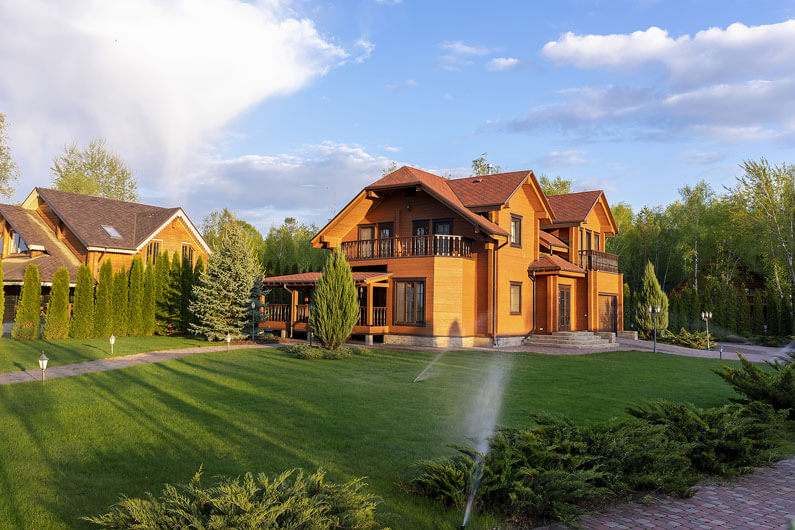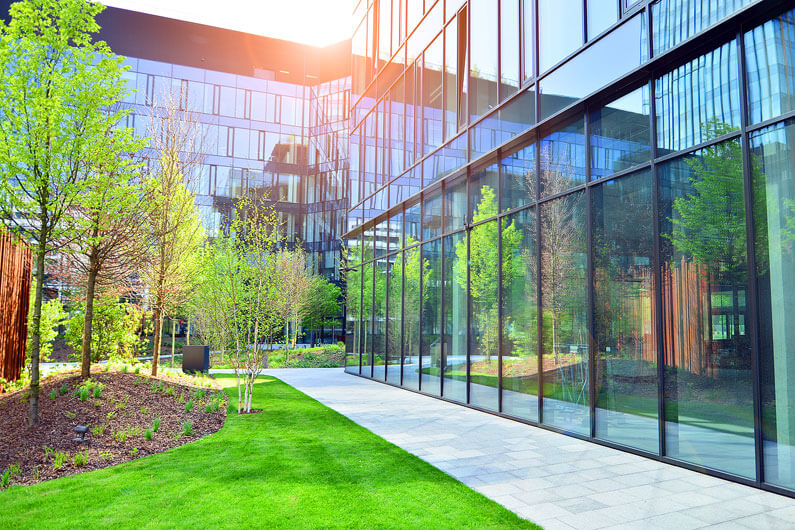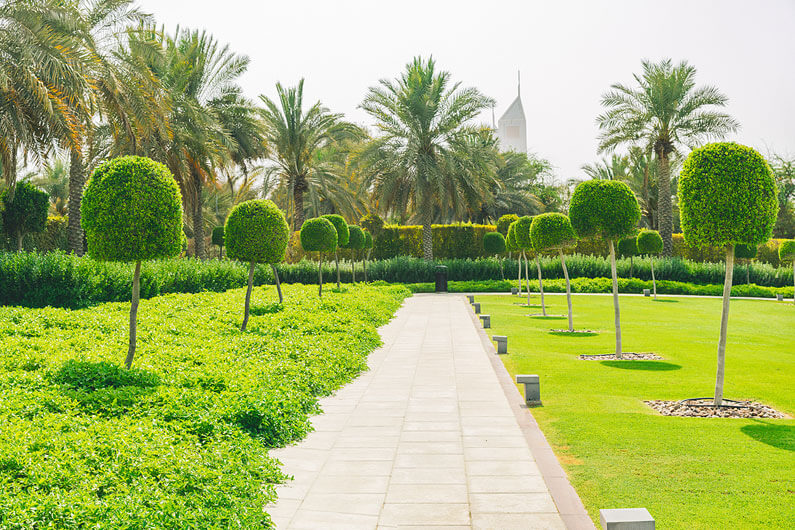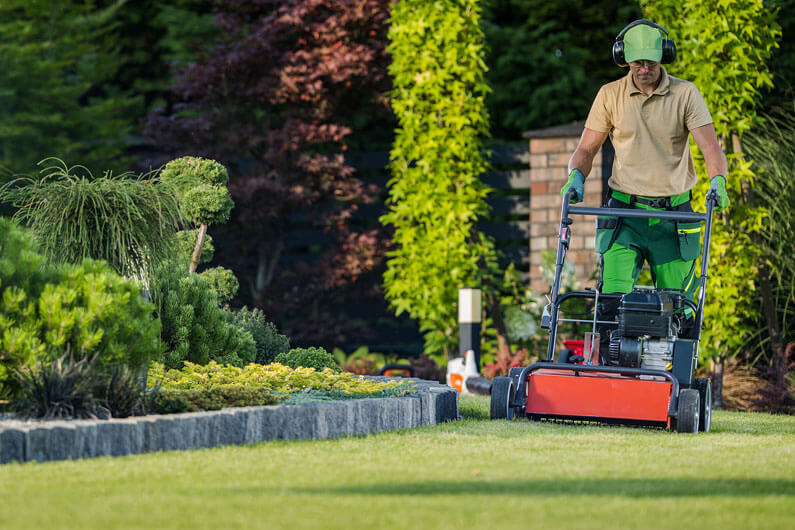
Annual Lawn Maintenance Tips
These annual lawn maintenance tips will teach you how to maintain a healthy lawn and keeping up with lawn maintenance is an important part of property care. After sod installation is done, there’s work to not just do during spring and summer but year-round. Taking care of one’s lawn promotes growth and protects the grass. A healthy lawn that’s been properly maintained is something truly to behold.
The best practices for lawn maintenance range from a proper mowing schedule to fertilizing, irrigation, and thatch control. The best lawn is one that’s dense, with a healthy amount of growth, and quality. Here is how to make it happen in your yard landscaping.
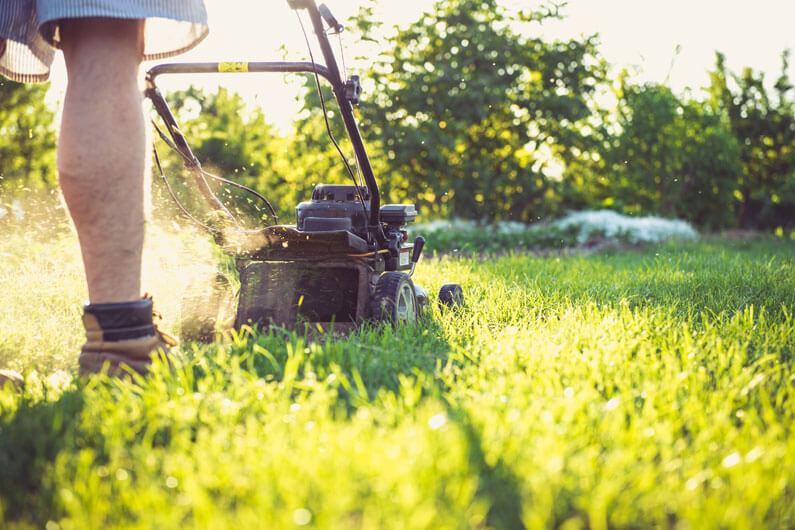
Mowing The Lawn
How you mow your lawn will determine the density, uniformity, and aesthetic of a lawn. Why mowing is often done incorrectly or is neglected is because mowing the lawn is time-consuming and rather boring compared to other lawn maintenance tasks. Even so, it’s incredibly important.
To mow your lawn properly, make sure the lawn’s dry which will ensure the grass clippings are evenly distributed. Leave those clippings on the lawn. They have nutrients and water in them that will break down, helping your lawn maintain its health. It will also allow you to cut down on fertilizer by a third if you use your clippings in this way.
Ensure when you cut your grass, you remove only about a third of the grass blade. Anything more and you end up with shallow grass which cannot take up the recommended amounts of water and nutrients.
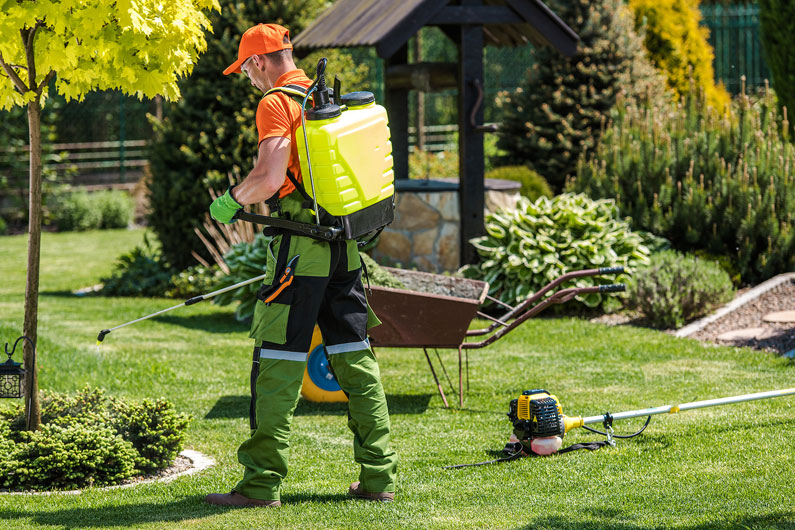
Fertilizing Your Lawn
We can’t dig into lawn maintenance tips without discussing fertilizer.
The three main nutrients in fertilizer a lawn needs are nitrogen, phosphorous, and potassium. Nitrogen gives the grass its dark green color as well as its density. Phosphorous promotes plant maturity and good root development. Potassium helps with wear, drought tolerance, and winter hardiness.
There are many types of fertilizer you can use. Inorganic fertilizer, such as ammonium nitrate or ammonium sulfate. Organic fertilizer, such as activated sewage sludge or animal by-products. There is also synthetic fertilizer, including IBDU, urea formaldehyde, and sulfur-coated urea.
For home lawn care, you will want multiple yearly applications of fertilizer, likely every 6-8 weeks Typically, this is once in early spring, once in late spring, again in late summer, and then a final fall fertilization. An even application of fertilizer is also important in achieving a uniform green lawn.
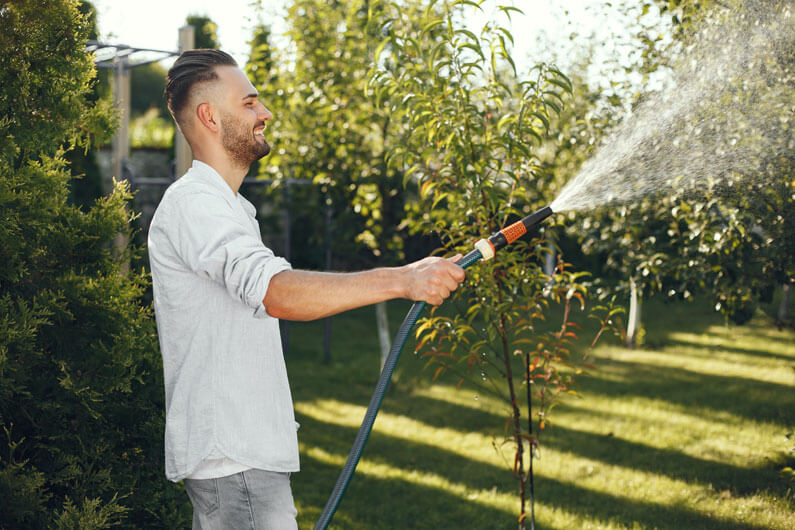
Watering Your Lawn
A normal rainfall pattern may not provide sufficient moisture during the growing season. You know it’s time to water your lawn when there are footprints left behind after walking across, if you’re seeing dark blue-green in color, or if grass blades are folding inwards.
The best time to water is early morning with no wind. This ensures the most even water distribution. Be careful not to use too much water as too much can cause thatching, fertilizer leaching, disease, and weed problems.
The proper amount of water to give a lawn is to a depth of 10-20 cm. To get this, place a jar in the area being watered. If after 15 minutes, you have 0.5 cm in your jar, you want to get within the 2.5 cm to 4 cm range at most. Use this as your measuring stick.
Keep in mind that a lawn can survive 4-6 weeks in a dormant state during summer dry periods. After rain or water returns, expect the lawn to green up again in 7-10 days. When the lawn is dormant, do not fertilize, do not mow, and keep foot traffic off it.
Dethatch The Lawn In Spring And Fall
Every spring and fall, dethatch and aerate the soil. Thatch is a layer of decaying leaves, grass, stems, and roots that build up into a wet spongy patch. Thatch can harbor insects and diseases, and restrict grass from growing into the soil properly.
Thatch can be prevented through frequent mowing, proper watering, and regular fertilization.
Breaking up thatch and checking the lawn for similar decaying organic matter should be done every six months.
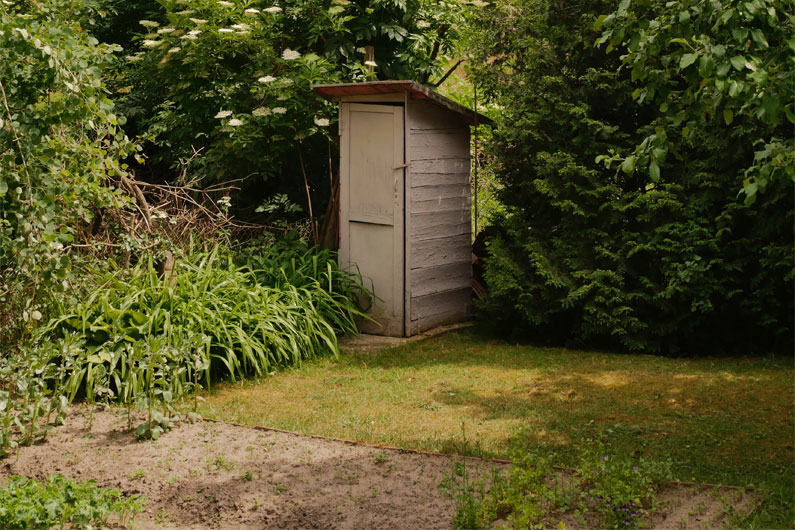
Tackling Damaged Lawns At The Right Time Of Year
Lawns can become thin and damaged by sources like insects, diseases, weeds, and overuse.
To repair a lawn by overseeding, do so in mid-August through to mid-September. Add compost or topsoil, then overseed at double the seeding rate. Water several times of day and one week after seeding, reduce watering to twice a day until you see the seedlings are established.
If there are areas that have irreparable damage, cut out any dead or damaged areas to a depth of 4 cm. Rake it. Add fertilizer. Place sod on and water it to ensure it does not dry out. Newly sodded areas require 10-14 days to root. This can be done any time of year.
Also, come early spring, this is another important time of year to evaluate the health of your lawn. Assess what damage the snow did. Rake your lawn to encourage turf to dry up and fertilize lightly to encourage growth. This will help your lawn recover as spring carries on.
More Annual Lawn Maintenance Checks To Do: From Weeds To Insect Management
Every two months, look at your lawn for weeds. Pull them out by hand and/or raking. Mow regularly to prevent seed formation.
For insect management, it requires ongoing care. A well-maintained lawn that receives regular watering typically does not have to fend off many bugs. That said, the most common lawn insects include hairy cinch bugs, grubs, sod webworms, the European crane fly, bluegrass billbug, and turfgrass scale all require their own method of management.
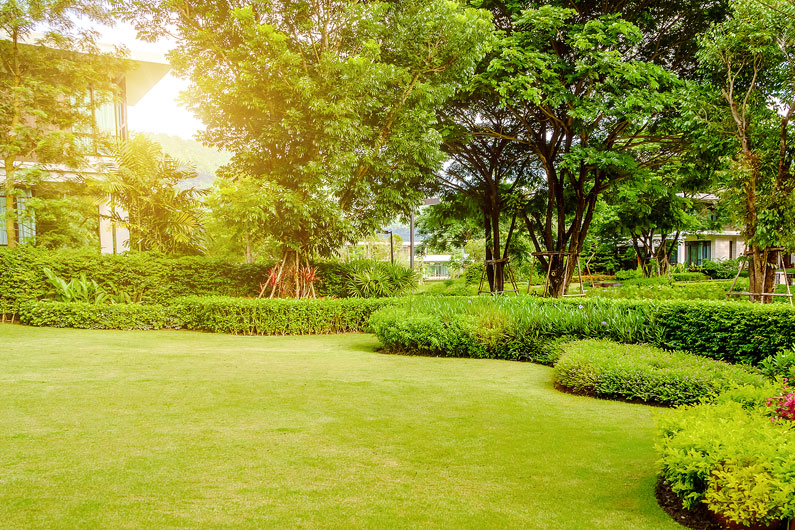
Improve Lawn Health With Professional Lawn Maintenance And Lawn Care
Have your lawn professionally managed by the experts at Green Earth Environmental Landscape Services. We can help analyze the health of the grass and soil, ensuring that disease, pests, and damage are handled efficiently without delay. Achieve the best-looking lawn with proper annual maintenance. If you aren’t sure where to start with your lawn maintenance, schedule a consultation with one of our experts to find out more on what the next steps are as they relate to lawn care.

